Ghost Ransomware
Deleting Ghost Ransomware In Simple Steps
Look at various different errors caused by Ghost Ransomware Error 0x80200056, 0x0000010D, 0x8024000D WU_E_XML_MISSINGDATA Windows Update Agent could not find required information in the update's XML data., 0x80244033 WU_E_PT_ECP_FAILURE_TO_EXTRACT_DIGEST The file digest could not be extracted from an external cab file., Error 0xC1900202 - 0x20008, 0x00000027, 0x80248019 WU_E_DS_NEEDWINDOWSSERVICE A request to remove the Windows Update service or to unregister it with Automatic Updates was declined because it is a built-in service and/or Automatic Updates cannot fall back to another service., 0x00000061, 0x80242014 WU_E_UH_POSTREBOOTSTILLPENDING The post-reboot operation for the update is still in progress., 0x000000A7, 0x8024F003 WU_E_INVALID_EVENT The XML in the event namespace descriptor could not be parsed., 0x00000071, 0x000000E3, 0x8024D002 WU_E_SETUP_INVALID_IDENTDATA Windows Update Agent could not be updated because the wuident.cab file contains invalid information., 0x0000010A, 0x80244021 WU_E_PT_HTTP_STATUS_BAD_GATEWAY Same as HTTP status 502 - the server, while acting as a gateway or proxy, received an invalid response from the upstream server it accessed in attempting to fulfill the request.Easy Steps To Delete Ghost Ransomware From Infected PC
Ghost Ransomware is detected as a perilous PC threat which can harm your PC data and files very badly. It intrudes your PC silently and secretly so that you will not identify its presence easily and it can spread itself as much as possible. It can corrupt your data and make it inaccessible. Moreover, it can cause your PC to degrade its performance and applications to respond slowly.
You can infect your PC in many ways like when you open a spam email, visit some unknown and untrusted site, clicking malicious ads or pop-ups and many other ways. But one important method used by Ghost Ransomware is bundling method in which it gets installed directly with the installation of free downloads. On its arrival into the system, it can almost disturbs the internal settings and functioning of the PC. Hence, if you find such malware into the PC, you need to Delete it.
Guide 1 : Erase Ghost Ransomware From Chrome In PC
Guide 2 : Erase Ghost Ransomware From Control Panel In PC
Guide 3 : Erase Ghost Ransomware From Registry Entry In PC
Guide 4 : Erase Ghost Ransomware From Task Manager In PC
Guide 5 : Guides To Start PC In Safe Mode
How To Effectively Delete Ghost Ransomware From Your PC
Guide 1 : Erase Ghost Ransomware From Chrome In PC
From Internet Explorer -
- Click on Gear icon to open Tools menu in the Internet Explorer window.
- Click on Manage Add-ons option.
- Goto Toolbars and Extensions tab.
- Locate Ghost Ransomware related add-ons - > Disable button.
- Click More information button and finally click on Delete button to completely Delete Ghost Ransomware.

From Google Chrome -
- At first, launch the Google Chrome browser.
- Click on gear icon present in your browser to open Chrome menu.
- Click on Tools option.
- Click on Extension.
- Select all unwanted extensions.
- Click on trash bin icon to Delete Ghost Ransomware.

From Mozilla Firefox -
- Click on the Menu icon present at the top right corner of the browser.
- Select Add-ons option.
- In the Add-ons window, choose the Extensions or Appearance panel.
- Select add-on related to Ghost Ransomware which you want to Delete.
- Click the Remove button.
- Click Restart if it asks.
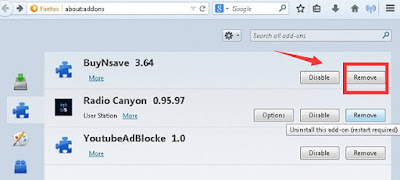
From Microsoft Edge -
- Click on More (...) icon and click Settings then.

- Now, select A specific page or pages under the Open with option.
- Again, select Custom option.
- Type the URL of the page you want to set as your browser's default homepage.

Guide 2 : Erase Ghost Ransomware From Control Panel In PC
For Windows XP
- Click on Start button and click Control Panel.

- Select Add or Remove Programs option.

- Find and Delete Ghost Ransomware related programs in the window that appears.

For Windows 7
- Press Window key present on the keyboard.

- Click Control Panel option from the menu.

- A Control Panel window appears from where click on Programs option.

- Select executable file of Ghost Ransomware.
- Click on Uninstall option.

For Windows 8
- Open run box by pressing Window+R keys together.

- Type control panel and hit Enter key.

- Click on Delete a Program.

- Then select all the programs related to Ghost Ransomware.
- Click Uninstall option.

For Windows 10
- Click on Start button.
- Select Settings option present in the bottom left corner of the screen.
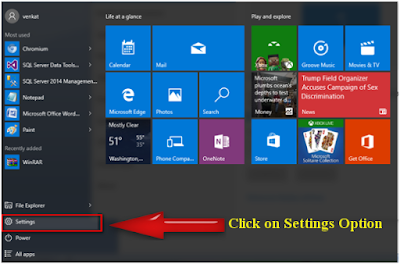
- Select System option under Setting.

- Click on App & Features option.
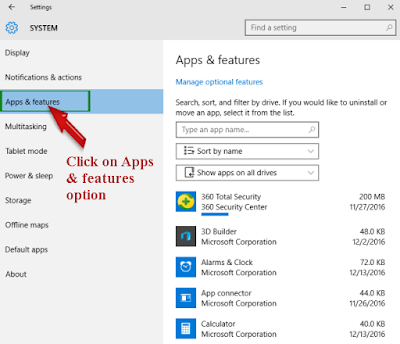
- Now, Delete all the unwanted program.
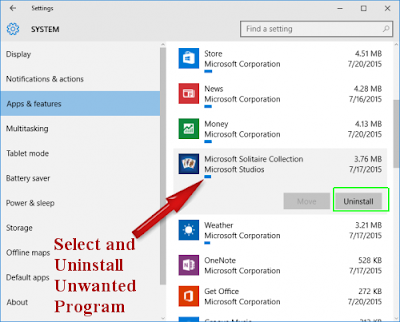
Guide 3 : Erase Ghost Ransomware From Registry Entry In PC
- Press 'Windows+R' keys to open Run box.
- Type 'regedit' in the box and click OK button.
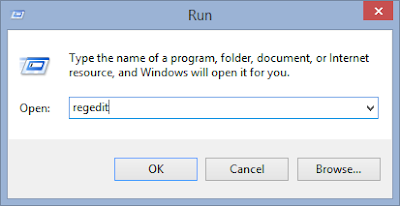
- Find out Delete all the registry files related to Ghost Ransomware.
HKEY_LOCAL_MACHINEPCCurrentControlSetServicesWpm
HKEY_CURRENT_USERSoftwareMicrosoftInternet ExplorerMain “Default_Page_URL”
HKEY_LOCAL_Machine\Software\ClassesGhost Ransomware
HKEY_CURRENT_USER\Software\Microsoft\Windows\CurrentVersion\Run “.exe”
HKCU\Software\Microsoft\Windows\CurrentVersion\Internet Settings\random
HKEY_LOCAL_MACHINE\SOFTWARE\Microsoft\Windows\CurrentVersion\run\random
HKEY_CURRENT_USER\Software\Microsoft\Windows\CurrentVersion\Internet Settings “CertificateRevocation” = ’0
Guide 4 : Erase Ghost Ransomware From Task Manager In PC
- Press Alt + Ctrl + Delete keys altogether to open task manager.

- In the window, click on Process tab.
- Select the unwanted processes running.

- Click on End Process.
Guide 5 : Steps To Start PC In Safe Mode
In windows XP/Vista/7 -
- Click on Start icon.
- Place the mouse on Shutdown button and then click on Restart button.
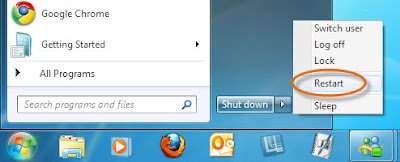
- Keep pressing F8 button when the PC starts booting-up.
- Select 'Advance boot menu' present on the screen.
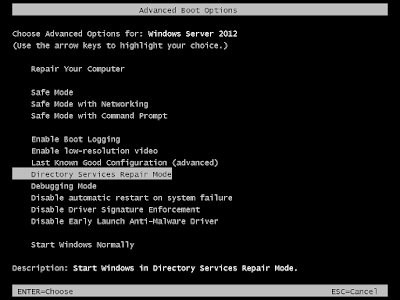
- Select 'Safe Mode With Networking' option and press Enter key.
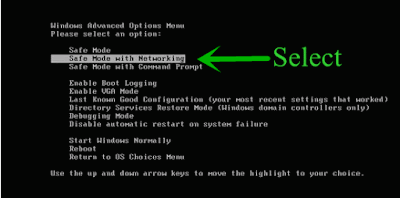
In windows 8/10 -
- Click on Start button and press Shift key at the same time.
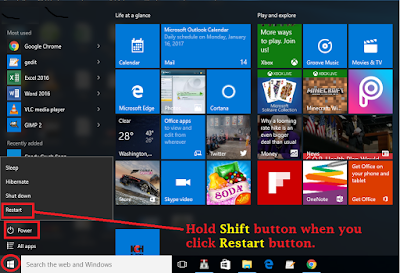
- Click on Restart button and click Troubleshoot option.
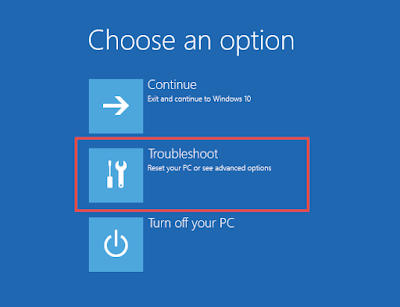
- Click on 'Advanced option' -> Startup Settings.
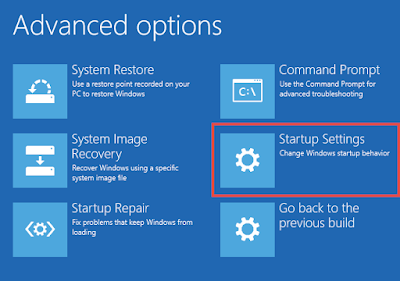
- Choose 'Enable Safe Mode' option from the given list and click on Restart.
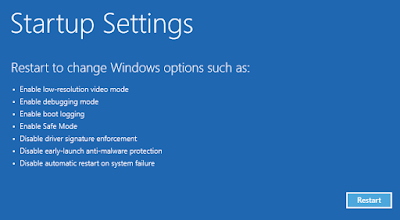
- Press F5 button to choose 'Safe Mode With Networking' mode.
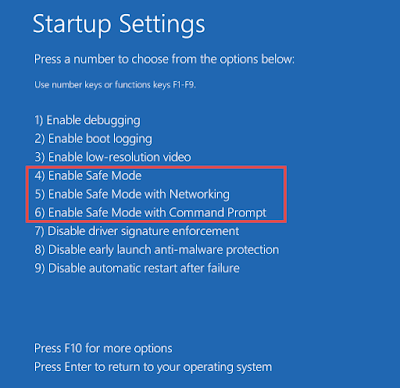

No comments:
Post a Comment